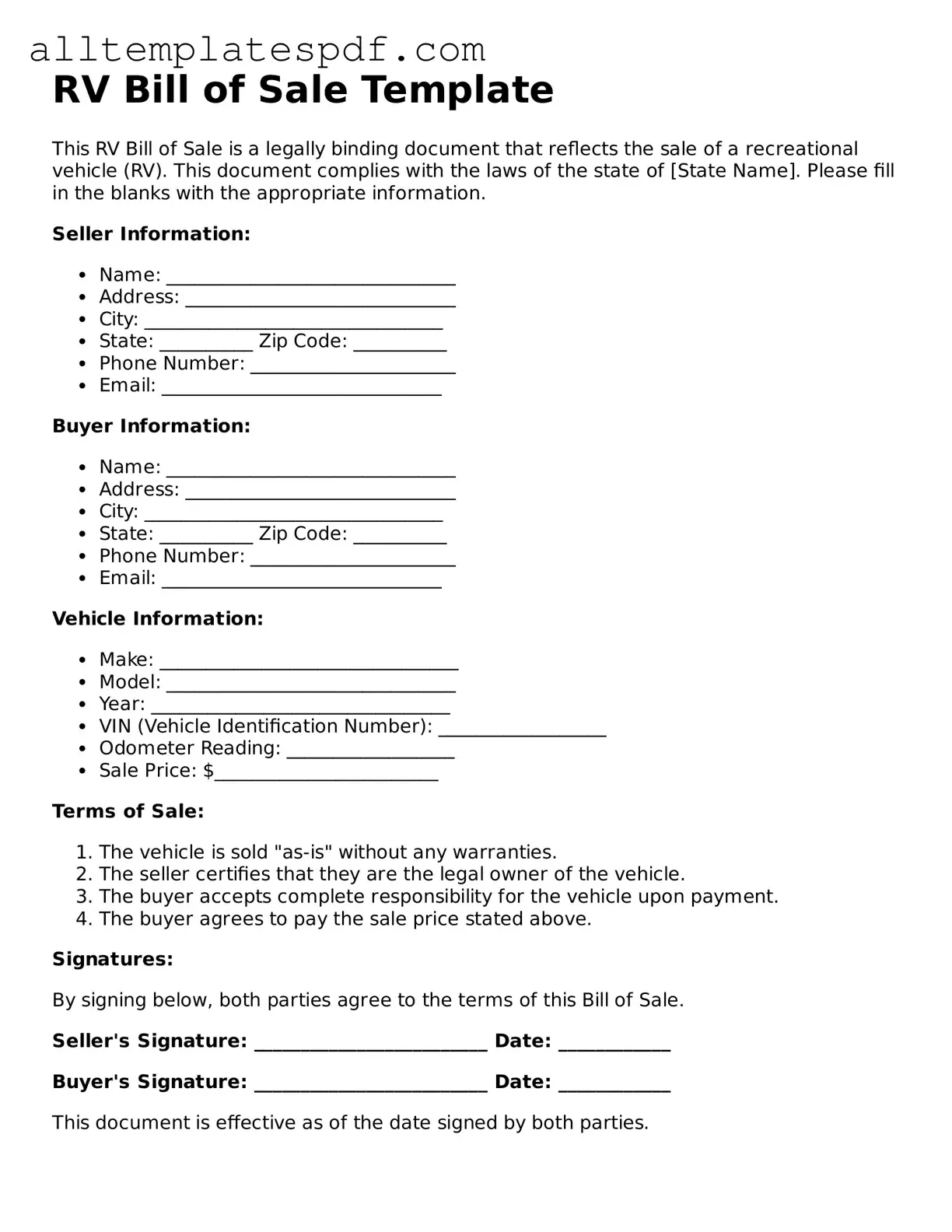Filling out an RV Bill of Sale form can seem straightforward, but many people make common mistakes that can lead to complications down the line. One frequent error is failing to include all necessary information. Buyers and sellers must provide accurate details about the RV, including the make, model, year, and Vehicle Identification Number (VIN). Omitting any of these details can create confusion and may even affect the legality of the sale.
Another mistake often seen is not having both parties sign the document. A Bill of Sale is only valid when both the buyer and seller have acknowledged the transaction. Without signatures, the document may not hold up in legal situations, leaving both parties vulnerable. It’s essential to ensure that everyone involved has signed and dated the form.
People also frequently neglect to include the sale price. This omission can lead to disputes later on, especially if the buyer believes they paid a different amount than what was recorded. Clearly stating the sale price not only helps maintain transparency but also aids in tax calculations for both parties.
Additionally, failing to check for errors in spelling or numbers can be detrimental. Simple mistakes, such as transposing digits in the VIN or misspelling names, can create significant issues. These errors may cause delays in registration or even lead to legal complications. Taking the time to double-check all entries can save a lot of hassle.
Some individuals forget to provide a copy of the Bill of Sale to the buyer. After the sale, the seller should ensure that the buyer receives their copy for record-keeping purposes. This document serves as proof of ownership transfer and can be crucial for future transactions or when registering the RV.
Finally, not understanding local regulations can lead to problems. Each state may have specific requirements regarding the Bill of Sale, including whether it needs to be notarized or filed with a government office. Familiarizing oneself with these rules can prevent unnecessary complications and ensure a smooth transaction.
